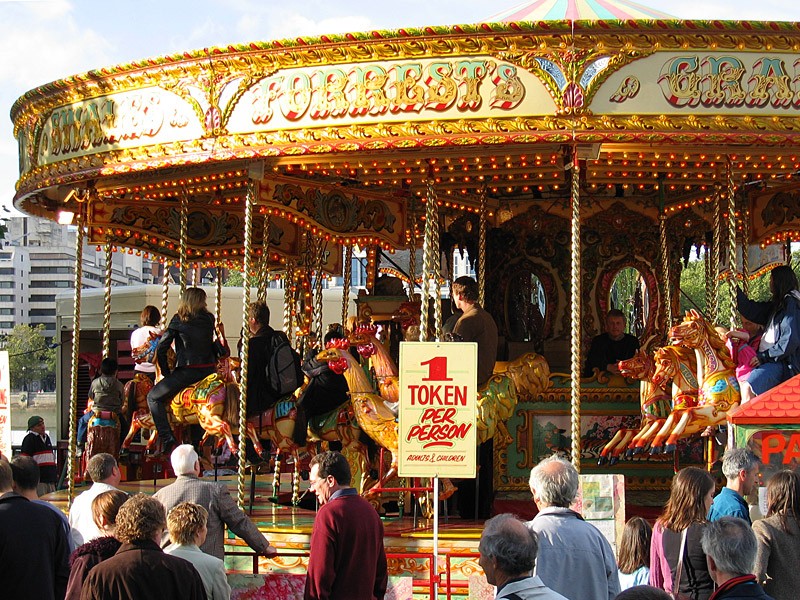The Mutual Fund MerryGoRound
Post on: 16 Март, 2015 No Comment

Paul Sahre
New Haven
AS stock prices have gyrated wildly, many investors have behaved in a perverse fashion, selling low after having bought high. Individual investors bear some responsibility for ill-advised responses to the ups and downs in the market, but they are not the only ones to blame. For decades, the mutual fund industry, which manages more than $13 trillion for 90 million Americans, has employed market volatility to produce profits for itself far more reliably than it has produced returns for its investors.
Too often, investors believe that mutual funds provide a safe haven, placing a misguided trust in brokers, advisers and fund managers. In fact, the industry has a history of delivering inferior results to investors, and its regulators do not provide effective oversight.
The companies that manage for-profit mutual funds face a fundamental conflict between producing profits for their owners and generating superior returns for their investors. In general, these companies spend lavishly on marketing campaigns, gather copious amounts of assets and invest poorly. For decades, investors suffered below-market returns even as mutual fund management company owners enjoyed market-beating results. Profits trumped the duty to serve investors.
Mutual fund companies, retail brokers and financial advisers aggressively market funds awarded four stars and five stars by Morningstar. the Chicago-based arbiter of investment performance. But the rating system merely identifies funds that performed well in the past; it provides no help in finding future winners. Nevertheless, investors respond to industry come-ons and load up on the most stellar offerings.
In 2010, investors redeemed $152 billion from one-star, two-star and three-star funds and placed $304 billion in four-star and five-star funds. In the crisis-scarred year of 2008, even as investors withdrew $174 billion from one-star, two-star and three-star funds, they added $47 billion to four-star and five-star funds. Year in and year out, flows to four-star and five-star funds prove remarkably resilient and overshadow flows to the three bottom categories.
This churning of investor portfolios hurts investor returns. First, brokers and advisers use the pointless buying and selling to increase and to justify their all-too-rich compensation. Second, the mutual fund industry uses the star-rating system to encourage performance-chasing (selling funds that performed poorly and buying funds that performed well). In other words, investors sell low and buy high.

Ill-advised buying and selling of funds costs the investing public a substantial sum. In 2010, Morningstar found that if mutual fund investors in 2000, as a whole, had simply bought and held their funds for 10 years, their investment outcomes would have improved by an average of 1.6 percentage points per year. That 1.6 percent may not sound like much, but it adds up to tens of billions of dollars per year. Another Morningstar study, in 2005, examined 10 years of returns for 17 categories of stock funds. In each category, the actual returns after taking into account the ill-timed buying and selling fell short of the returns that were advertised to the public. More stable funds performed better; more volatile funds performed worse.
Highly volatile technology funds, for example, generated annual returns that were a stunning 13.4 percent below the reported results, as a direct result of monumentally mistimed buying and selling. Holders of less volatile conservative allocation funds suffered only a 0.3 percent annual deficit.
Even while the investing public suffers from exposure to funds with volatile performance, the mutual fund industry benefits. With a volatile set of offerings, the fund companies will always have some (temporarily) strong performers that rise to the top and earn the four or five stars needed for marketing to a gullible public. Of course, the volatility cuts both ways, ensuring that erstwhile top performers fall to the bottom and end up with one star or two stars. From a business perspective, however, all is not lost, as a number of one-star and two-star funds, with sufficiently volatile strategies, will rise phoenix-like from the ashes and join the exalted ranks of four- and five-star funds.
Why isnt there more of an outcry? Investors navely trust their brokers and advisers. Most understand too little about financial markets to make informed decisions, intervene too frequently in counterproductive ways and gather too little information about portfolio holdings to evaluate results. Investors like to believe they are doing well, even when they are not.














